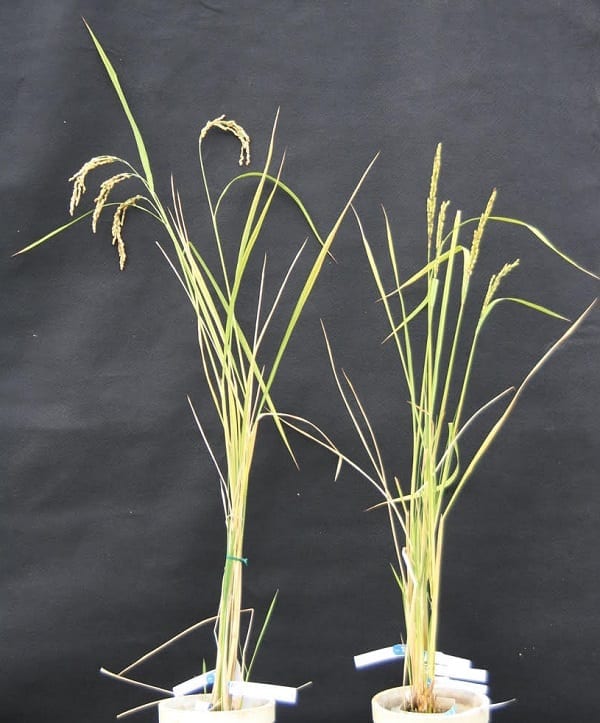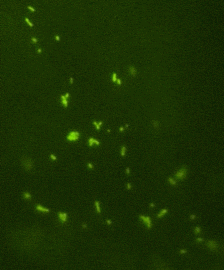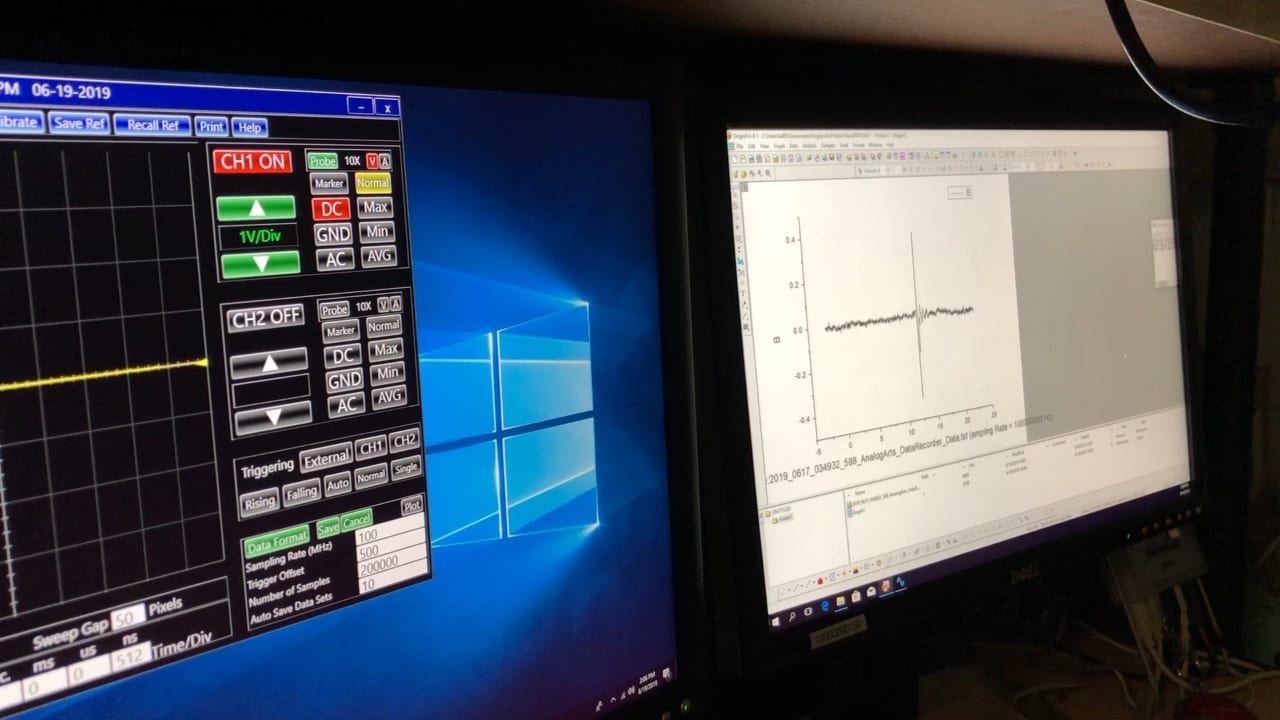
Tool could ensure genetic diversity of crops
Researchers in Japan have edited plant mitochondrial DNA for the first time, which could lead to a more secure food supply.
Nuclear DNA was first edited in the early 1970s, chloroplast DNA was first edited in 1988, and animal mitochondrial DNA was edited in 2008. However, no tool previously successfully edited plant mitochondrial DNA.
Researchers used their technique to create four new lines of rice and three new lines of rapeseed (canola).
“We knew we were successful when we saw that the rice plant was more polite — it had a deep bow,” said Associate Professor Shin-ichi Arimura, joking about how a fertile rice plant bends under the weight of heavy seeds.
Arimura is an expert in plant molecular genetics at the University of Tokyo and led the research team, whose results were published in Nature Plants. Collaborators at Tohoku University and Tamagawa University also contributed to the research.
Genetic diversity for the food supply
Researchers hope to use the technique to address the current lack of mitochondrial genetic diversity in crops, a potentially devastating weak point in our food supply.
In 1970, a fungal infection arrived on Texas corn farms and was exacerbated by a gene in the corn’s mitochondria. All corn on the farms had the same gene, so none were resistant to the infection. Fifteen percent of the entire American corn crop was killed that year. Corn with that specific mitochondrial gene has not been planted since.
“We still have a big risk now because there are so few plant mitochondrial genomes used in the world. I would like to use our ability to manipulate plant mitochondrial DNA to add diversity,” said Arimura.
Plants without pollen
Most farmers do not save seeds from their harvest to replant next year. Hybrid plants, the first-generation offspring of two genetically different parents, are usually hardier and more productive.
To ensure farmers have fresh, first-generation hybrid seeds each season, agricultural supply companies produce seeds through a separate breeding process using two different parents. One of those parents is male infertile — it cannot make pollen.
Researchers refer to a common type of plant male infertility as cytoplasmic male sterility (CMS). CMS is a rare but naturally occurring phenomenon caused primarily by genes not in the nucleus of the cells, but rather the mitochondria.
Green beans, beets, carrots, corn, onions, petunia, rapeseed (canola) oil, rice, rye, sorghum, and sunflowers can be grown commercially using parents with CMS-type male infertility.

Beyond green
Plants use sunlight to produce most of their energy, through photosynthesis in green-pigmented chloroplasts. However, chloroplasts’ fame is overrated, according to Arimura.
“Most of a plant isn’t green, only the leaves above the ground. And many plants don’t have leaves for half the year,” said Arimura.
Plants get a significant portion of their energy through the same “powerhouse of the cell” that produces energy in animal cells: the mitochondria.
“No plant mitochondria, no life,” said Arimura.
Mitochondria contain DNA completely separate from the cell’s main DNA, which is stored in the nucleus. Nuclear DNA is the long double-helix genetic material inherited from both parents. The mitochondrial genome is circular, contains far fewer genes, and is primarily inherited only from mothers.
The animal mitochondrial genome is a relatively small molecule contained in a single circular structure with remarkable conservation between species.
“Even a fish’s mitochondrial genome is similar to a human’s,” said Arimura.
Plant mitochondrial genomes are a different story.
“The plant mitochondrial genome is huge in comparison, the structure is much more complicated, the genes are sometimes duplicated, the gene expression mechanisms are not well-understood, and some mitochondria have no genomes at all – in our previous studies, we observed that they fuse with other mitochondria to exchange protein products and then separate again,” said Arimura.
Manipulating plant mitochondrial DNA
To find a way to manipulate the complex plant mitochondrial genome, Arimura turned to collaborators familiar with the CMS systems in rice and rapeseed (canola). Prior research strongly suggested that in both plants, the cause of CMS was a single, evolutionarily unrelated mitochondrial gene in rice and in rapeseed (canola): clear targets in the perplexing maze of plant mitochondrial genomes.
Arimura’s team adapted a technique that had previously edited mitochondrial genomes of animal cells growing in a dish. The technique, called mitoTALENs, uses a single protein to locate the mitochondrial genome, cut the DNA at the desired gene, and delete it.
“While deleting most genes creates problems, deleting a CMS gene solves a problem for plants. Without the CMS gene, plants are fertile again,” said Arimura.
The fully fertile four new lines of rice and three new lines of rapeseed (canola) that researchers created are a proof of concept that the mitoTALENs system can successfully manipulate even the complex plant mitochondrial genome.
“This is an important first step for plant mitochondrial research,” said Arimura.
Researchers will study the mitochondrial genes responsible for plant male infertility in more detail and identify potential mutations that could add much-needed diversity.
Learn more: Researchers can finally modify plant mitochondrial DNA
The Latest on: Plant mitochondrial DNA
[google_news title=”” keyword=”plant mitochondrial DNA” num_posts=”10″ blurb_length=”0″ show_thumb=”left”]
via Google News
The Latest on: Plant mitochondrial DNA
- Viruses Newson May 8, 2024 at 5:00 pm
May 2, 2024 — Researchers have found that a brain disorder associated with flu (influenza-associated encephalopathy, or IAE) can be caused by the influenza virus entering the brain from the ...
- Best Antivirus Software for 2024on May 4, 2024 at 11:00 pm
Clifford is a managing editor at CNET, where he leads How-To coverage. He spent a handful of years at Peachpit Press, editing books on everything from the first iPhone to Python. He also worked at ...
- What to know about the bird flu outbreak in the US after virus fragments found in milk sampleson April 24, 2024 at 6:29 pm
Several dairy cows have been infected, resulting in milk samples showing inactive remnants of the virus, and one human case has been confirmed. Health officials say the food supply is safe and the ...
- Next pandemic likely to be caused by flu virus, scientists warnon April 20, 2024 at 1:40 pm
An international survey, to be published next weekend, will reveal that 57% of senior disease experts now think that a strain of flu virus will be the cause of the next global outbreak of deadly ...
- Man who caught virus from a monkey in a critical condition – B virus explainedon April 16, 2024 at 4:33 am
Colin Michie does not work for, consult, own shares in or receive funding from any company or organization that would benefit from this article, and has disclosed no relevant affiliations beyond ...
- West Nile Virus Infectionon April 12, 2024 at 5:00 pm
There is no established treatment for WNV infection. Currently, prevention and control are the only measures that help decrease the morbidity and mortality associated with WNV infection. As the ...
- Bird flu detected among chickens in Texas and Michiganon April 12, 2024 at 4:16 am
Ca-Maine Foods, largest fresh egg producer in US, temporarily halts production at one Texas facility after discovering virus Avian influenza has been detected among chickens in Texas and Michigan ...
- A Random Influx of DNA from a Virus Helped Vertebrates Become So Stunningly Successfulon April 11, 2024 at 5:00 pm
Retroviruses such as the HIV virus carry out this genetic hacking by reversing the sequence of the gene readout. They inject their RNA into the cells they infect, which serves as the code to make ...
- Measles outbreak in Chicago: What to know about the viruson March 27, 2024 at 9:50 am
Though most vaccinated people have close to zero chance of contracting the virus, here’s what to know about the disease. Yes, they do. In fact, measles, which was considered eliminated in the ...
- Inside the Coronaviruson February 3, 2024 at 9:56 am
We show how the immune system would normally attempt to neutralize virus particles and how CoV-2 can block that effort. We explain some of the virus's surprising abilities, such as its capacity to ...
via Bing News










